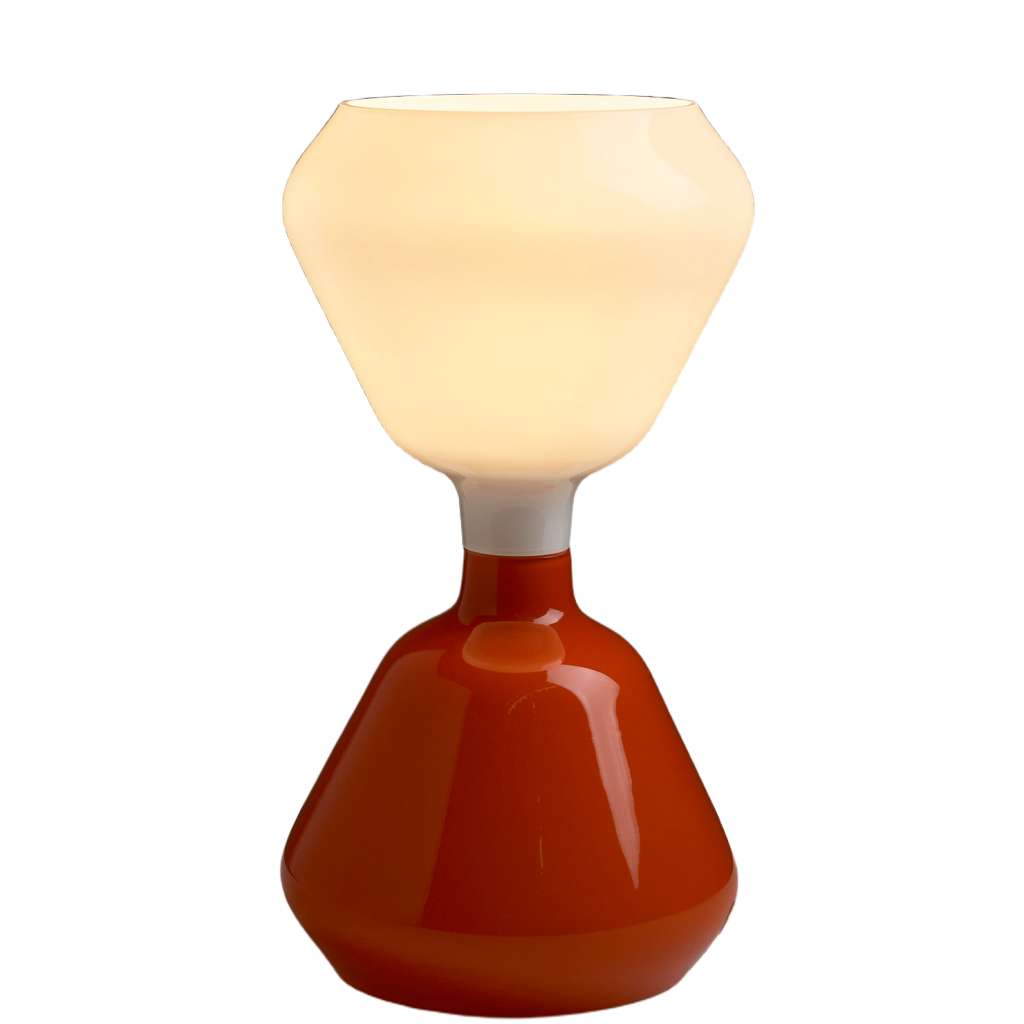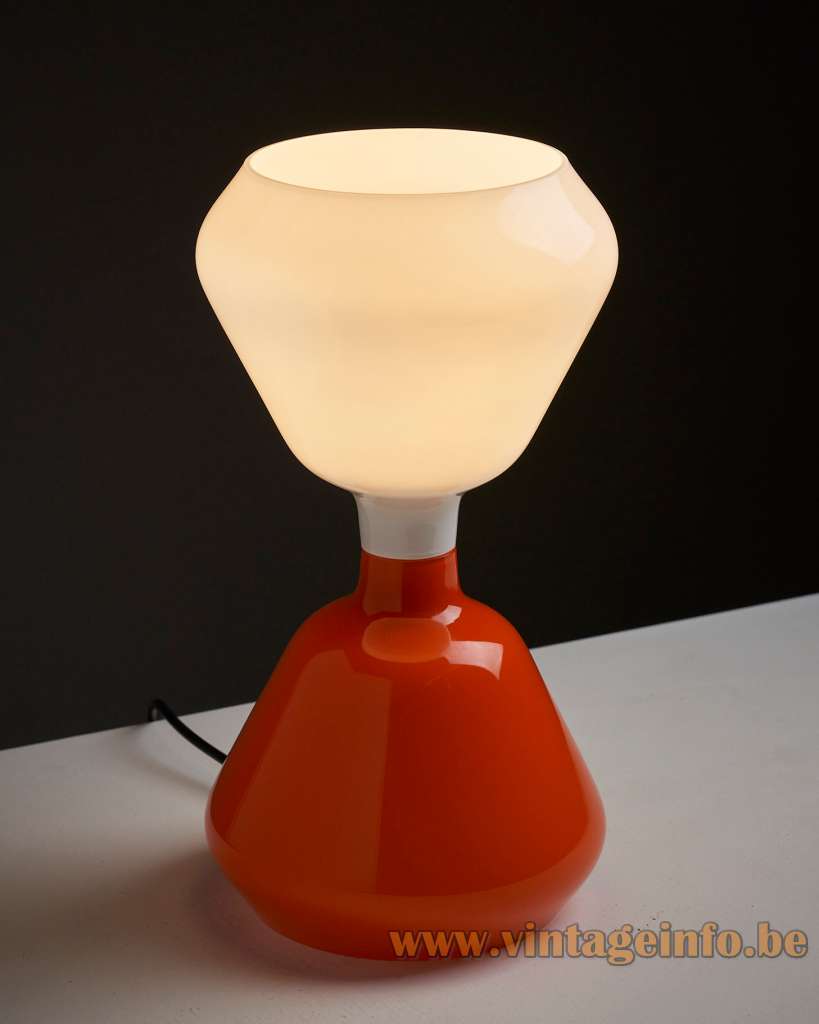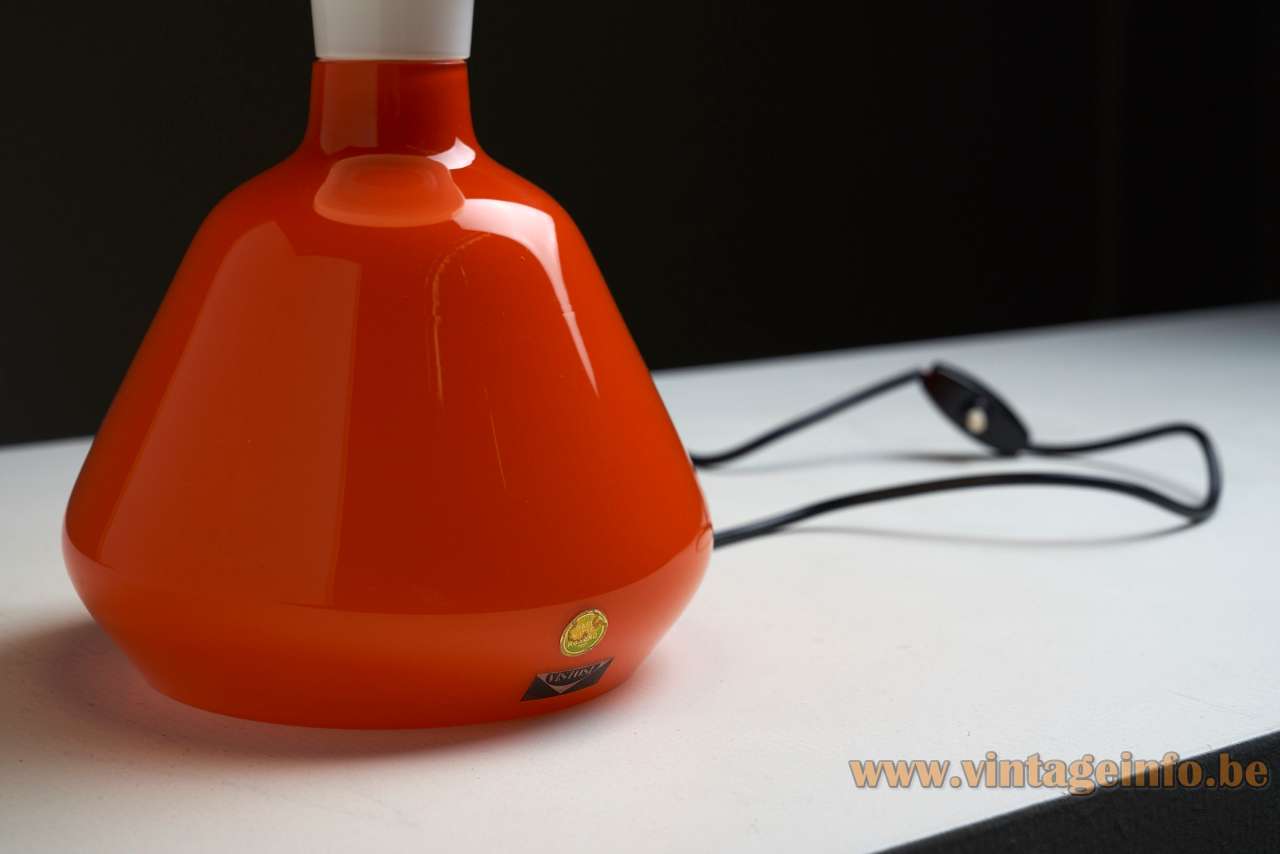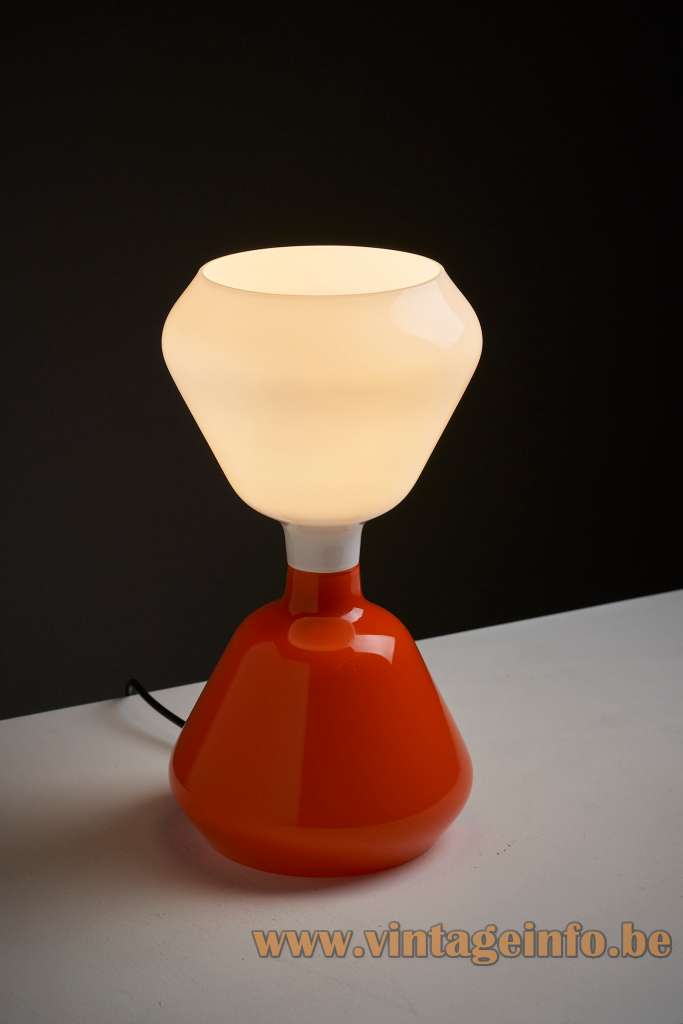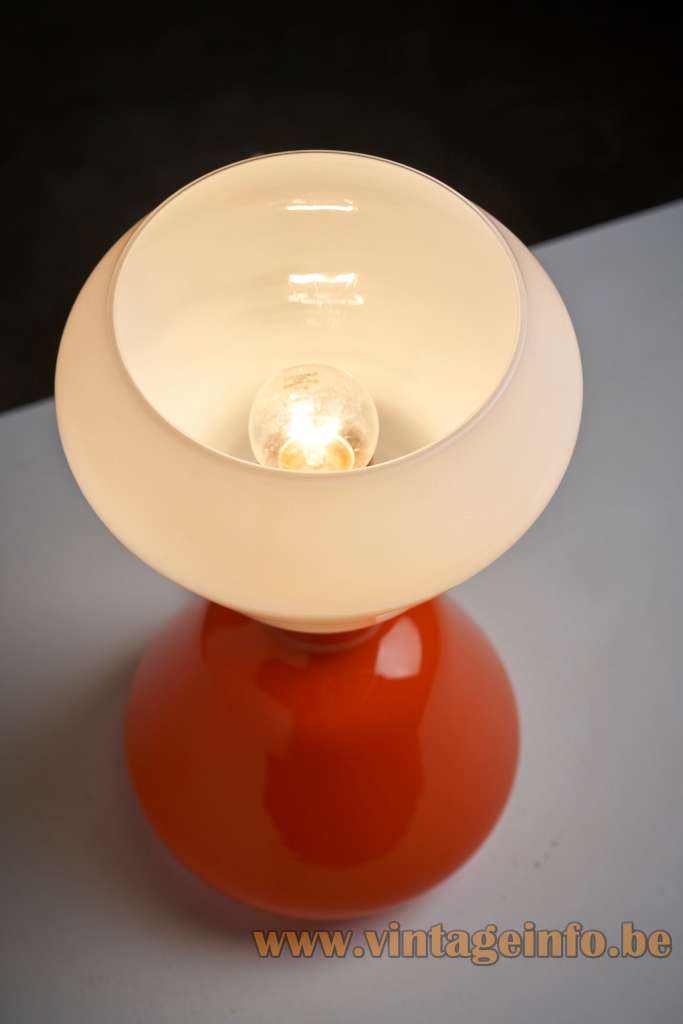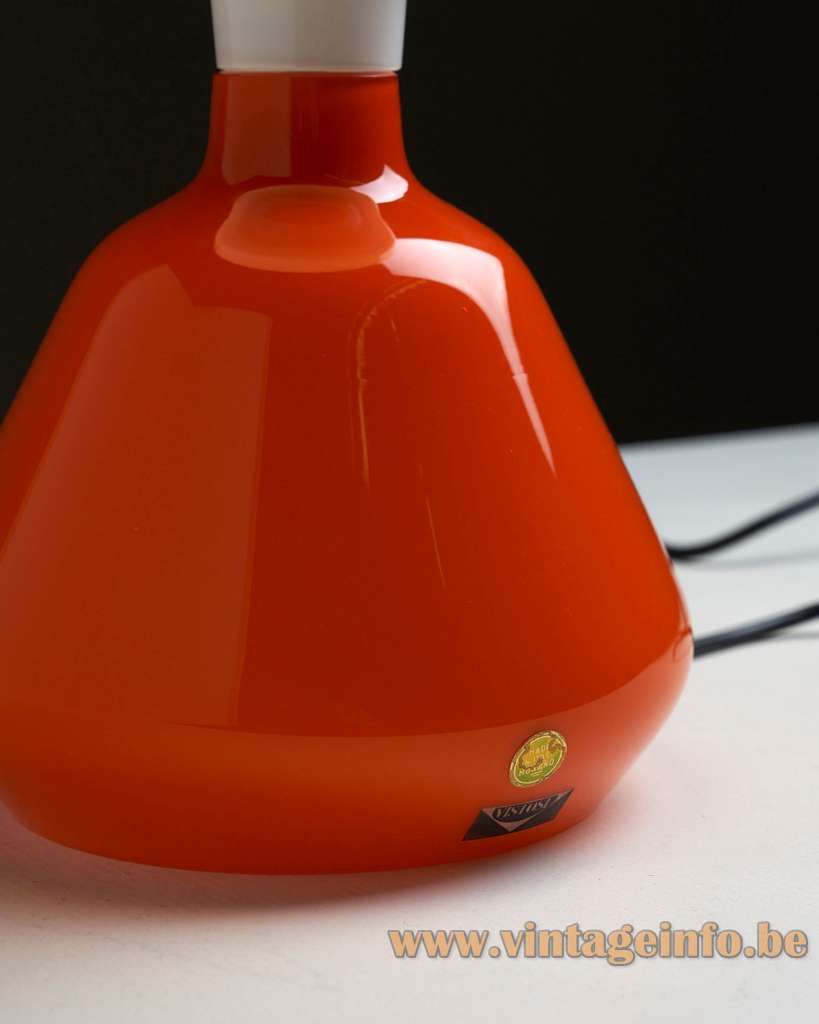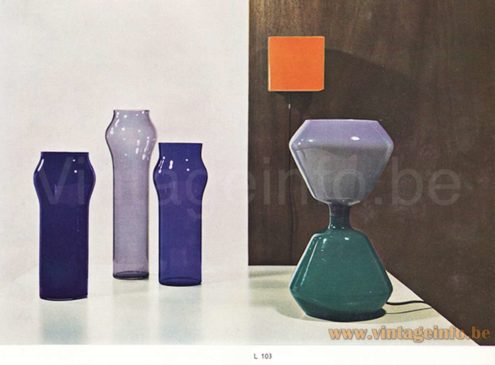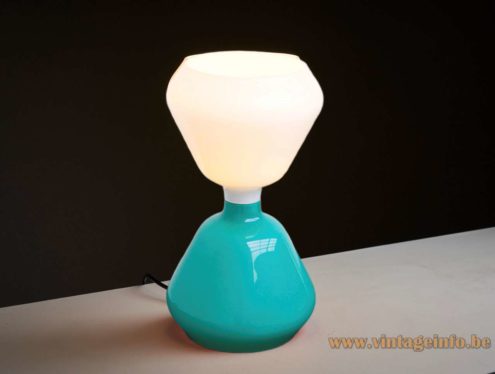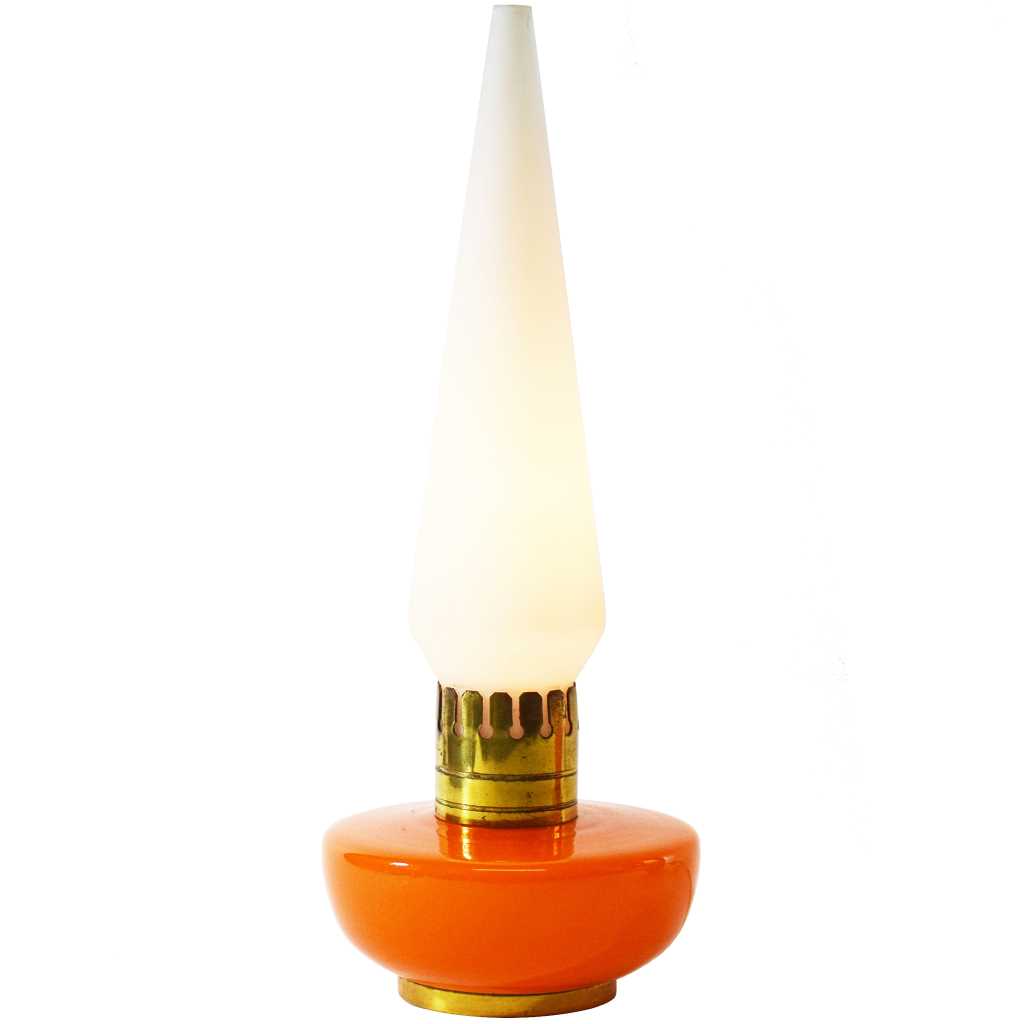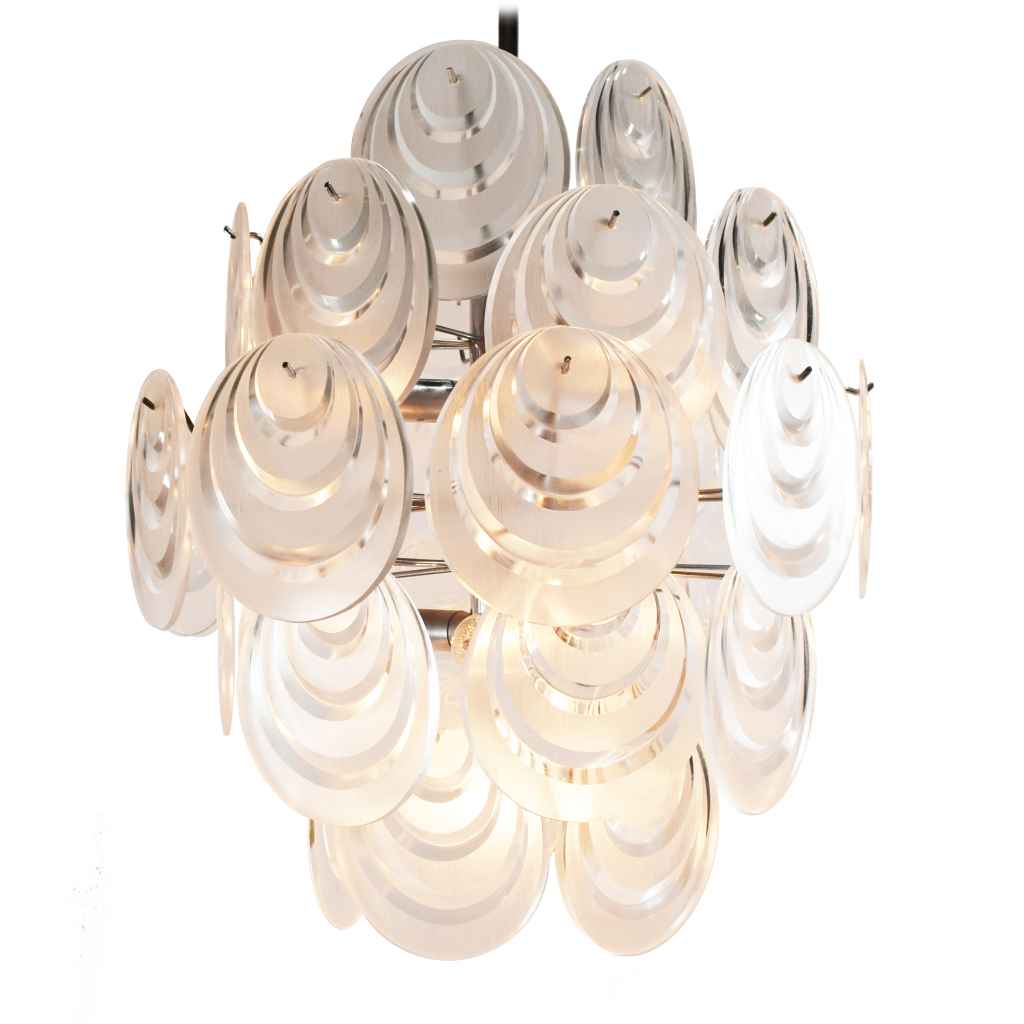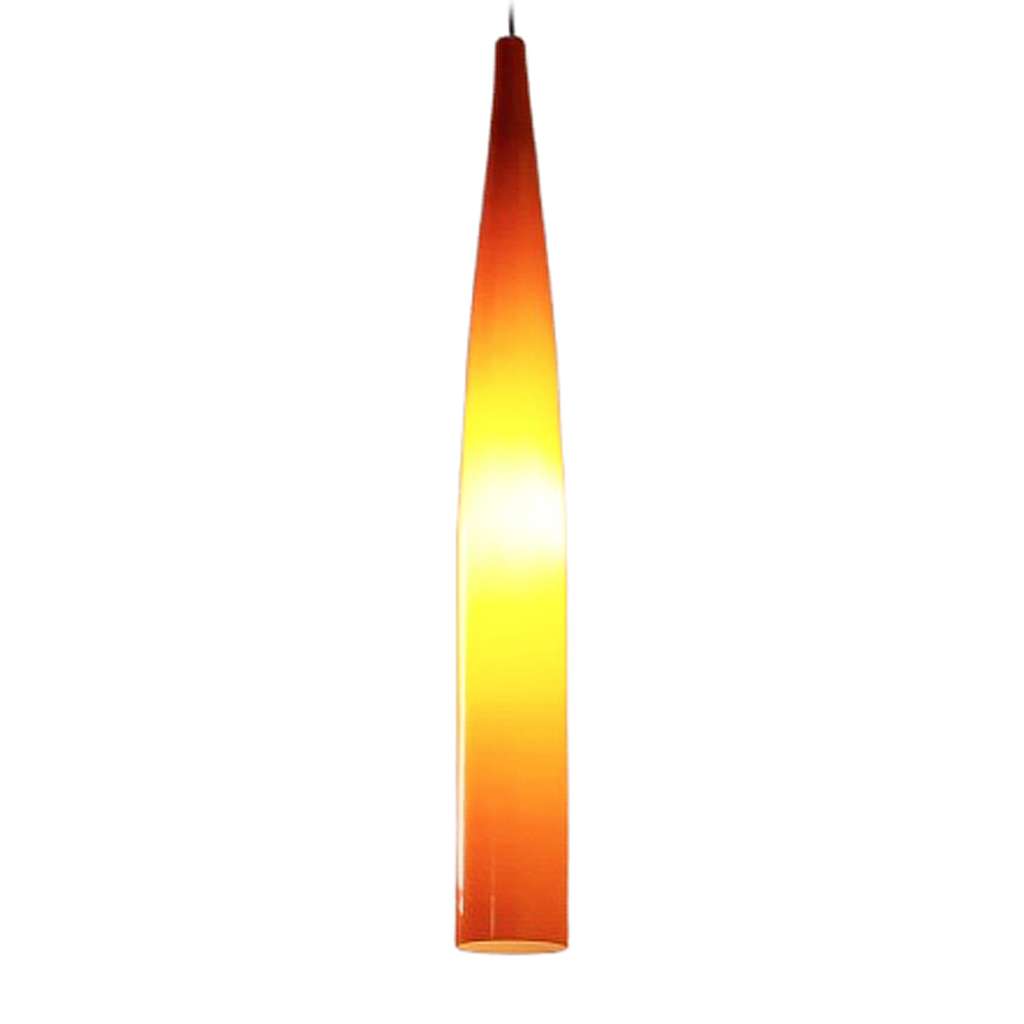Vistosi L103 Table Lamp – 1960s Catalogue Picture
Turquoise and light purple Vistosi L103 table lamp together with 3 vases.
Vistosi L103 Table Lamp – Turquoise & White Version
Links (external links open in a new window)
Vistosi history – Vistosi website
Luciano Vistosi – Murano Glass Museum
Vintageinfo
Many thanks to Max from AfterMidnight for the pictures.
Vistosi L103 Table Lamp
Materials: Hand-blown hourglass style duo-tone colours glass lampshade in red and white crystal glass. Bakelite E14 lamp socket.
Height: 33 cm / 12.99”
Width: ∅ 17 cm / 6.69”
Electricity: 1 bulb E27, 1 x 60 watt maximum, 110/220 volt.
Any type of light bulb can be used, but preferably a white/opaque bulb.
Period: 1960s, 1970s – Mid-Century Modern.
Designer: Peter Pelzel.
Manufacturer:Vistosi, Murano, Italy.
Other versions: This Vistosi L103 table lamp comes in several colours.
Peter Pelzel
Peter Pelzel, born in Murano, 1937, is an Italian architect and glass designer, and the son of Bohemian-born engraver Franz Pelzel, one of the key figures at the Murano workshop S.A.L.I.R.
Pelzel studied architecture at the Istituto Universitario di Architettura di Venezia (IUAV) and graduated in 1964. In 1958 he joined S.A.L.I.R. (Studio Ars et Labor Industrie Riunite) in Murano, where he worked alongside his father on engraved and decorated glass.
In 1962 he became a designer for Vistosi, creating vases, lighting, bottles and tableware that often combine simple blown-glass forms with colourful murrine decoration. From 1968 to 1973 he collaborated with La Murrina, and from 1969 he also designed for Vetrelco in Treviso.
In 1972 Pelzel opened his own architecture studio, while continuing to work as a freelance designer for several Murano glassworks. His work for Vistosi, La Murrina, Vetrelco and other furnaces includes both tableware and lighting and is appreciated by collectors for its refined forms, careful engraving and sophisticated use of colour.
A glass object designed with Vittoria Pallucchini and produced by Lambda Vetrelco, titled “Contenitori universali” (Universal containers), was exhibited in the Decorative Arts Pavilion of the 35th Venice Biennale in 1970, underlining his role in the contemporary Italian glass scene of that period.
Vistosi
Early Origins
The story of Vistosi begins in Murano with the Gazzabin family, who acquired the Al Bastian furnace in 1640. Soon after, the family name “Vistosi” emerged, and by 1791Gio-Batta Vistosi had become Gastaldo dell’Arte, head of the Murano glassmakers’ guild.
A New Beginning after the War
In 1945Guglielmo Vistosi, heir of the Gazzabin family, opened a new furnace in Murano right after World War II, focusing on lighting. Following his premature death, his sons Gino and Luciano, together with their uncle Oreste, laid the foundation of the modern Vistosi company.
The Design Revolution of the 1950s–1980s
The arrival of Venetian architect Alessandro Pianon in 1956 marked a turning point. With Gino and Luciano, he transformed the company into a pioneer of innovation and modern design.
From the late 1950s to the 1980s, Vistosi collaborated with some of the most influential names in design, such as Angelo Mangiarotti, Gae Aulenti, Ettore Sottsass Jr., Massimo Vignelli, Adalberto Dal Lago, Stefania Giannotti, Elleonore Peduzzi Riva, Vico Magistretti, Michele De Lucchi and many others. This golden era produced some of the most iconic Vistosi lighting, now highly sought after by collectors.
The Moretti Era
In 1989 the brand was acquired by Murano businessman Giancarlo Moretti, who had long experience in the glass industry. His son Matteo Moretti later relaunched the company after a short closure in the 1990s, expanding it with the acquisition of brands such as Alox, G2 and Triade.
The last of the founding generation, Luciano Vistosi (1930 – 2010), devoted his later life to research and glass sculpture, leaving a lasting artistic legacy.
Innovation and Recognition since the 2000s
From the early 2000s, Vistosi entered a new phase of experimentation and recognition. Collections such as Rina, Cheope09 and Minigiogali updated traditional techniques for contemporary forms. Later came Giogali 3D, a new interpretation of the famous chandelier, and Diadema, created with a unique patented rod process. Award-winning designs like Futura, Nodo, Trepai, Jube, Sata, Stone and Armonia confirmed Vistosi ’s relevance in international design.
In 2019 the company celebrated the 50th anniversary of Giogali, and in the following years it was recognised among the 100 Eccellenze Italiane, partnered with the Venice Glass Week, and launched a Virtual Museum, e-commerce platform and LED collections.
Designers of the Contemporary Period
Under the Moretti family, Vistosi worked with a wide range of contemporary designers, including Chiaramonte & Marin, Mauro Olivieri, Barbara Maggiolo, Paolo Crepax, Monica Agnolazza, Silvio Zanon, Giovanni Barbato, Matthias Hickl, Roberto Maci, Alberto Nason (son of Carlo), Romani Saccani Architetti Associati, Gregorio Spini, Emmanuel Babled, Oriano Favaretto, Marco Acerbis, Castaglia Associati, Pio e Tito Toso, Renato Toso, and Noti Massari & Associates.
A Defining Design
A remarkable fact in Vistosi ’s history concerns the famous Giogali chandelier series. Although countless catalogues, books and online sources credit the design to Angelo Mangiarotti, it was in fact created by Gino Vistosi himself – according to Gino Vistosi’s daughter.
